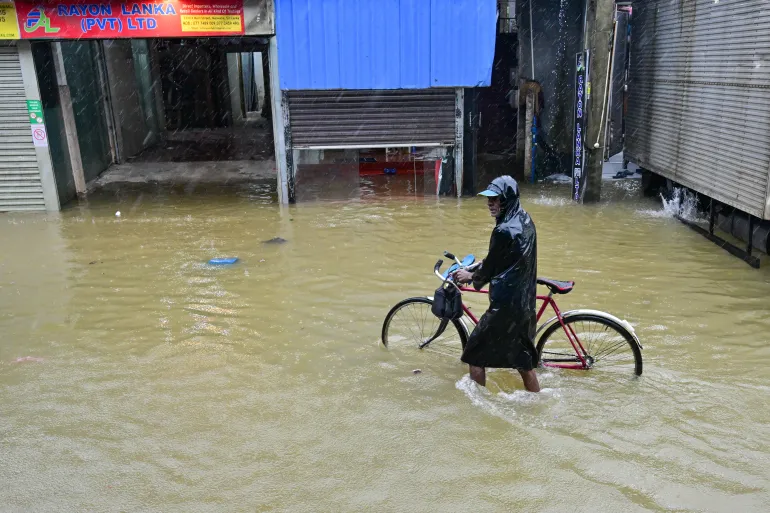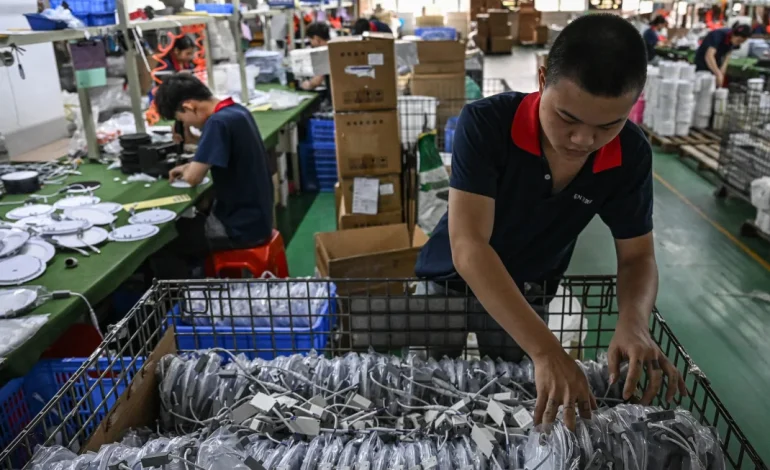China’s manufacturing sector contracted at its steepest rate in 16 months in April, underscoring mounting economic pressures as US tariffs—imposed by President Donald Trump—begin to take a stronger toll.
The latest data from the National Bureau of Statistics (NBS) reveal that the official manufacturing Purchasing Managers’ Index (PMI) dropped to 49.0, down from 50.5 in March, marking the weakest performance since December 2023. A reading below 50 indicates a contraction in manufacturing activity.
The decline follows the imposition of cumulative tariffs of up to 145% on Chinese goods by the United States, significantly disrupting bilateral trade flows and impacting production. According to Zhao Qinghe, a senior statistician at the NBS, the contraction was driven by “sharp changes in the external environment and other factors.”
The PMI data reflect broad weakness in China’s industrial base, including a drop in new export orders to 44.7—its lowest level since the peak of the Covid-19 pandemic. Employment in the manufacturing sector also saw a notable decline, further intensifying concerns over the economic outlook. Analysts have warned that the current policy measures may not be sufficient to fully counteract the effects of the tariffs.
Robin Xing, chief China economist at Morgan Stanley, wrote in a recent note that “the impact of tariffs will likely be most acute this quarter,” as many exporters have paused production and shipments due to growing uncertainty. Nomura Securities estimates that if Chinese exports to the US decline by 50%, as projected, job losses in China could exceed 15 million over time.
In response, Chinese authorities have announced a series of targeted initiatives aimed at bolstering domestic consumption and supporting affected sectors. These include easing credit access, promoting local government subsidies, and enhancing pension benefits. However, no sweeping nationwide stimulus has yet been introduced.
While China’s services and construction sectors showed marginal growth, with a non-manufacturing PMI reading of 50.4, the overall picture remains fragile. Analysts at Capital Economics predict China’s GDP growth may fall short of the government’s 5% target this year, forecasting a more modest 3.5% expansion due to weaker external demand.
Meanwhile, trade tensions continue to escalate. President Trump defended the steep tariffs in a recent interview, stating that “China probably will eat those tariffs,” while asserting they were necessary to curb what he described as unfair trade practices. Beijing, in turn, has imposed its own retaliatory tariffs—some as high as 125%—and strongly criticized Washington’s approach as protectionist.
Chinese Foreign Minister Wang Yi rejected the idea of a negotiated truce, stating that backing down would only encourage further pressure. A state-released video amplified this sentiment, calling on the global community to resist what it labeled “bullying” from the US.
Despite the rhetoric, some signs of limited relief have emerged, with exemptions granted on specific US imports, including medical and technological goods. Still, the broader trade environment remains tense, with no formal negotiations reported in progress.
Economic planners in Beijing have signaled that more proactive fiscal measures may be introduced in the coming months. Officials have reiterated confidence in meeting growth targets, though recent developments suggest that significant stimulus may be required to offset the ongoing impact of the trade dispute.
With input from CNN, the New York Times, and CNBC.










The latest news in your social feeds
Subscribe to our social media platforms to stay tuned